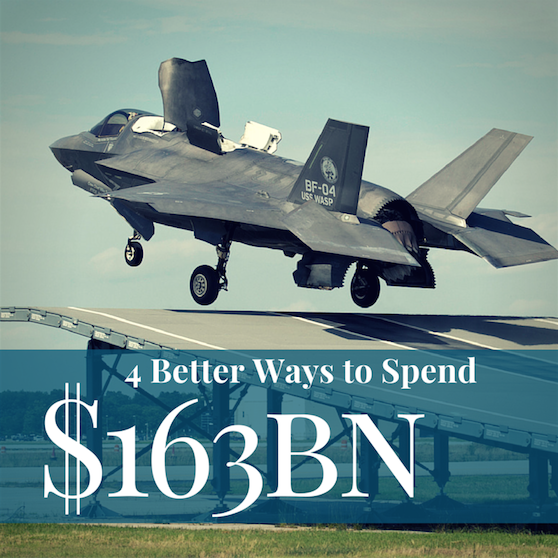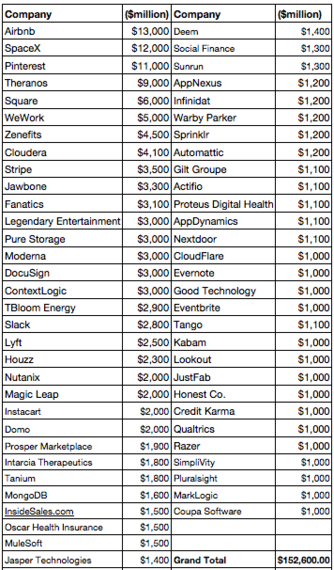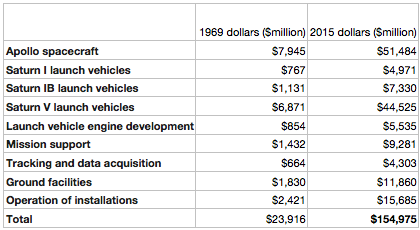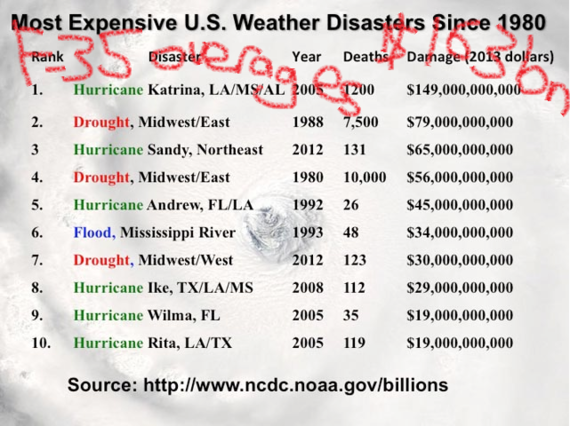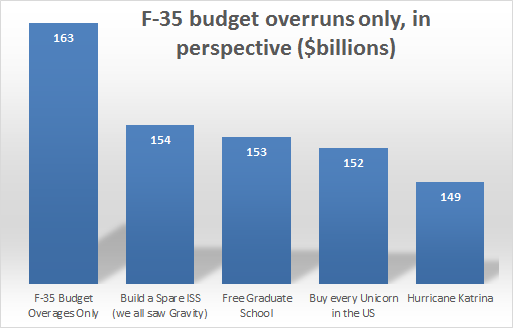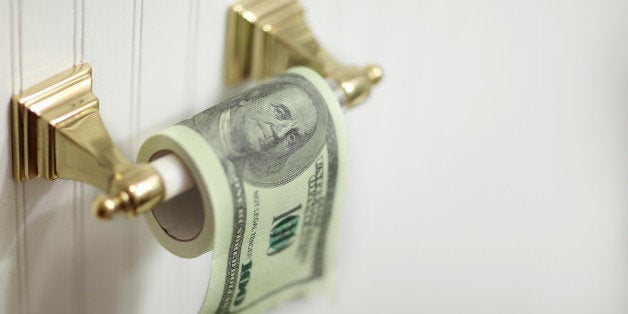
The F-35 joint strike fighter--the United States' most expensive and controversial warplane to date--is finally operational after more than a decade of painfully expensive setbacks. This is good news for supporters of the program, much more so than the program's last claim of good news - liftoff from a ski jump.
The initial F-35 contract was supposed to cost $1.5 trillion over 50 years. The current contract is seven years behind schedule and $163 billion over budget. Adding insult to injury, recent reports indicate that the F-35 won't even outperform the F-16, the very plane the F-35 has been designed to replace!
To put the cost of this $163bn, unforced error into perspective, here are four other things the United States Taxpayers could have bought with just the waste from the F-35 Program.
1. Buy Every Unicorn in the United States
Having spent a lot of time around startups, I know how hard every employee works to achieve liftoff. It's pretty standard for a startup to demand of its employees 70 hour weeks in meager conditions, all for the hopes that one day, when the startup sells for a billion dollars it will be worthwhile. These companies are hard to build, and success is a rarity, not a guarantee. From HBO's Silicon Valley to podcasts like StartUp, and almost 20% of graduating MBAs going into tech, the next generation is looking to strike it rich on a great idea. Startups that sell for over $1 billion, are referred to as 'unicorns' because they are so rare as to be almost mythological.
The F-35's cost overruns are so high that the U.S. government could have given back US Taxpayers enough money to buy every unicorn in the country except the three largest, Uber, Snapchat, and Palantir. The government could then provide the services of these companies as a public service.
Here's the list of companies that are worth less, combined, than just the mistakes of the F-35:
Source: http://gsvcap.com/wp/wp-content/themes/gsvcap/assets/GSVC_InvestorLetter2015_FINAL_website.pdf
2. Space: Go Back to the Moon or Build a Spare International Space Station
The International Space Station (ISS) is the most expensive and complex machine ever built. This International Space Station 'only' costs $150bn--still cheaper than the overruns of the Lightning II. There are many well documented benefits of space exploration that justify the cost of the ISS. The benefits of the new "most expensive machine ever built", a tiny, dangerous, questionably performing fighter plane is quite unclear.
For what the Pentagon has already sunk into developing an aircraft that just made its first successful ascent off a ski jump, we also could send men back to the moon. The total cost of the Apollo Eleven mission was reported to Congress as $25 billion in 1969 dollars. Taking inflation rates into account, the entire Apollo program is still cheaper than the F-35:
Put another way - NASA's approved 2015 budget is $18 billion--meaning the F-35's over-budget costs only, could pay for a decade of NASA projects. Projects that fund the kind of planetary exploration that future generations might come to depend on for survival.
3. Provide Free Graduate School Education
Imagine what society would look like if the country could afford to fund Law, Medical, PhD and Master degrees for every citizen who wanted one. Would society advance faster than ever before? Would we even need fighter planes? Philosophical questions aside, The United States could fund every one of its citizens seeking higher education degrees, if not for overages for the F-35 program.
According to the Council of Graduate Schools, total grad student enrollment is 1.7 million students. Depending on the program and school, the cost of a graduate degree is around $30,000 per year, which means American grad students spend $51 billion dollars per year. The average graduate program takes three years to complete, that figure becomes (1,700,000 students x $30,000 x 3 years) $153 billion in total grad school costs for every graduating class.
Instead of focusing on higher education and funding graduate school for every lawyer, doctor, engineer, and PhD candidate, we're left with "the worst plane in the world." I'm sure some of those engineering students could design a more cost effective fighter jet.
4. Prepare for the Worst Natural Disasters
Under President Obama's 2015 fiscal budget, the Federal Emergency Management Agency received $10.38 billion in federal funding. I don't have to tell you how much lower than $163 billion that is ($152.62 billion less, to be exact). Increasing FEMA's budget would leave our country better prepared to handle mother nature's next superstorm--a threat as formidable as any foes the F-35 will supposedly be able to conquer in battle.
Conclusion
Lockheed Martin has been allowed to operate above the consequences of the rest of the business world. By overpromising and underdelivering by a factor of a moon landing with no loss of contract, what is the message to our country's struggling students, entrepreneurs, and non-military government workers?
Furthermore, Lockheed Martin is a relatively tiny company compared to the size of the contract, worth only about $60 billion. It would have been cheaper for the United States to purchase the company, shut down every other program, and run the F-35 program themselves. How could the United States give a 55-year $1.5 trillion contract to a company that has only a few billion in cash?
It just doesn't make sense that there are no Capital Requirements for Government Contracts, the same way there are for banks. Lockheed Martin claims that cost overruns will bankrupt the company and put the entire program at risk, then Lockheed forces taxpayers to pay for Lockheed's mistakes. This kind of moral hazard allows execution at Lockheed to remain poor, to the detriment of the US Taxpayers. This type of contract error should have cost Lockheed their business.
